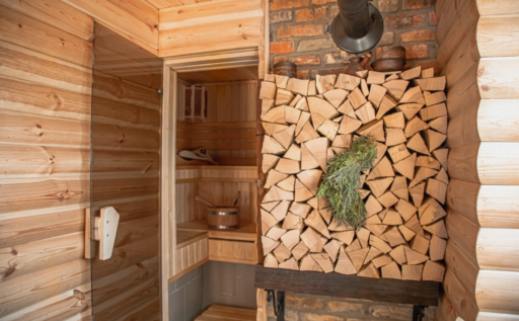Mold and mildew are common issues that can arise in saunas, especially in wood-burning ones. Not only can they be unsightly, but they can also pose health risks to those using the sauna. In this article, we will discuss effective techniques for removing mold and mildew from wood surfaces in saunas, as well as ways to prevent their growth in an eco-friendly manner. By understanding the causes of mold and mildew in saunas and implementing the proper solutions, you can ensure a clean and safe sauna environment for yourself and others.

Effective Techniques for Removing Mold and Mildew from Wood Surfaces in Saunas
Mold and mildew can be a common issue in wood-burning saunas, but there are effective techniques for removing these unsightly and potentially harmful substances from wood surfaces. One of the most popular methods is using a mixture of white vinegar and water to scrub the affected areas. This natural solution not only helps to kill mold and mildew spores, but also helps to prevent them from coming back.
Another effective technique is using a mixture of baking soda and water to create a paste that can be applied to the affected areas. This paste can help to scrub away the mold and mildew while also absorbing any odors that may be lingering in the wood.
For more stubborn cases of mold and mildew, you may need to use a stronger cleaning solution such as hydrogen peroxide or bleach. These chemicals should be used with caution and only in well-ventilated areas, as they can be harsh on both the wood and your respiratory system.
In addition to cleaning the affected areas, it's important to address the root cause of the mold and mildew growth. This may include improving ventilation in the sauna, reducing humidity levels, and addressing any water leaks or moisture issues in the wood.
By using these effective techniques for removing mold and mildew from wood surfaces in saunas, you can keep your space clean, healthy, and enjoyable for years to come.
Understanding the Causes of Mold and Mildew in Wood-Burning Saunas
The combination of heat and moisture in saunas creates the perfect conditions for mold and mildew to grow and spread rapidly. Additionally, the porous nature of wood surfaces in saunas provides an ideal surface for mold spores to attach and establish colonies.
The source of moisture in wood-burning saunas can vary, but common culprits include excess steam from water thrown on hot sauna rocks, leaking pipes or faucets, inadequate ventilation, and improperly sealed wood surfaces. Poor ventilation in particular can lead to a buildup of moisture in the sauna, creating a humid environment that is conducive to mold and mildew growth.
Furthermore, the use of certain types of wood that are more prone to moisture retention, as well as the presence of organic material such as dirt or body oils on wood surfaces, can contribute to mold and mildew development in saunas. It is essential to regularly inspect and maintain the sauna to ensure proper ventilation, seal any cracks or gaps in the wood, and promptly address any sources of excess moisture to prevent mold and mildew from taking hold.
Eco-Friendly Ways to Combat Mold and Mildew Growth in Saunas
Mold and mildew growth in saunas can be a common issue, especially in wood-burning saunas where the warm and moist environment is ideal for their development. While there are many commercial products available for combating mold and mildew, some of these may contain harmful chemicals that can be harmful to both the environment and human health. Luckily, there are eco-friendly ways to effectively combat mold and mildew growth in saunas.
One effective eco-friendly method is to use vinegar. Vinegar is a natural disinfectant that can help kill mold and mildew spores without the use of harsh chemicals. Simply mix equal parts vinegar and water in a spray bottle and spray the affected areas in your sauna. Let the solution sit for a few hours before wiping it clean with a damp cloth.
Another eco-friendly option is to use tea tree oil. Tea tree oil has natural anti-fungal properties that can help kill mold and mildew spores. Mix a few drops of tea tree oil with water in a spray bottle and spray the affected areas in your sauna. Allow the solution to sit for a few hours before wiping it clean.
Baking soda is another eco-friendly option for combating mold and mildew growth. Baking soda is a natural cleaner and deodorizer that can help remove mold and mildew from wood surfaces. Simply mix baking soda with water to form a paste and apply it to the affected areas. Allow the paste to sit for a few hours before scrubbing it clean with a brush.
In addition to these natural remedies, it is important to regularly ventilate your sauna to prevent mold and mildew growth. Proper ventilation will help reduce the humidity levels in your sauna, making it less hospitable for mold and mildew to thrive. Additionally, regularly cleaning and maintaining your sauna can help prevent mold and mildew from taking hold.
By utilizing these eco-friendly methods and practices, you can effectively combat mold and mildew growth in your sauna without the need for harmful chemicals. Not only will you be protecting the environment, but you will also be creating a safer and healthier space for yourself and your loved ones to enjoy.
